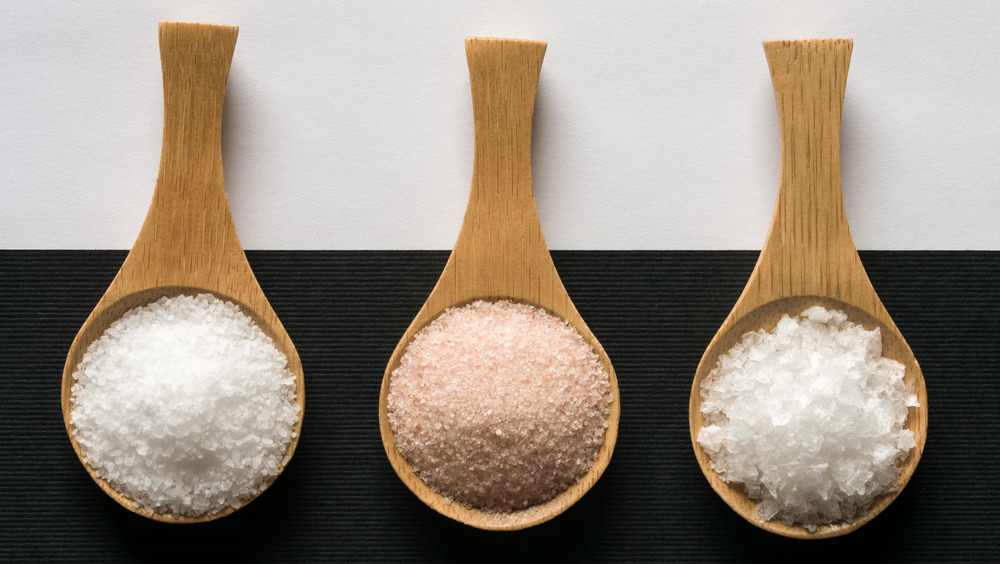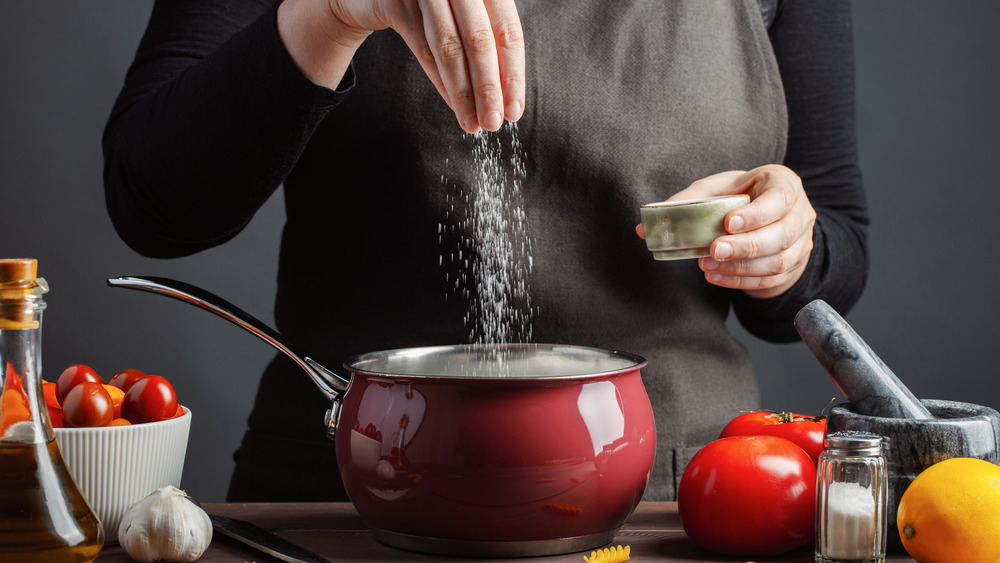Is There A 'Healthiest' Kind Of Salt?
A quick glance down the 'seasonings' aisle at any well-stocked grocery store gives us a visual into the American love affair with salt. Gone are the days of simply deciding between table salt or sea salt. Now we've got kosher salt, fleur-de-sel, pink, gray, black, and red salts, flavored salts, and the list goes on. But is there really any health benefit to choosing one over the other, especially considering that the price tags for each kind can vary wildly?
Let's compare three options in the low, middle, and high price ranges.
Common table salt is highly processed. It is stripped of trace minerals, leaving almost pure sodium chloride, but often has iodine added to it. It also has anti-caking agents added to prevent clumping of the finely-ground granules. It's the cheapest option at approximately $0.04 per ounce, but not the first choice of chefs since the additives tend to give it a slightly metallic taste (via SELF).
Sea salt comes, as you'd expect, from sea water. It's less processed than table salt, leaving trace minerals like magnesium, potassium, and calcium. The mineral content changes the flavor profile, and sea salt is considered to have a 'purer' flavor than table salt (via NBC News). It ranges in price from $0.11 – $0.25 per ounce and up.
Choose a salt based on flavor, texture, and use
Himalayan pink salt, the pretty pink crystals that have gotten so much attention lately, are mined in Pakistan at the Khewra Salt Mine. The pink color is a result of iron oxide (rust) in the salt. Pink salt is also slightly higher in trace mineral content, and therefore lower in sodium, than regular table salt (via Healthline). It carries a higher price tag too – from between $0.25 – $0.85 per ounce, depending on brand, coarseness, and packaging.
While it's nice to get some extra trace minerals anywhere we can, experts warn against making a decision about salt based on nutritional value. The amount of sodium in any type of salt is roughly the same, by weight, and the amount of trace minerals are so minimal that it's hardly significant.
Suzanne Steinbaum, M.D., cardiologist at The Mount Sinai Hospital and volunteer medical expert for the American Heart Association's Go Red for Women told NBC News, "Salt is salt is salt, whether it's pink or white or in tiny crystals or large flakes — it's not good for us, and sea salt is no more healthy than table salt in terms of its effect on blood pressure and heart health." Instead, make a decision based on flavor, texture, and its intended use.


